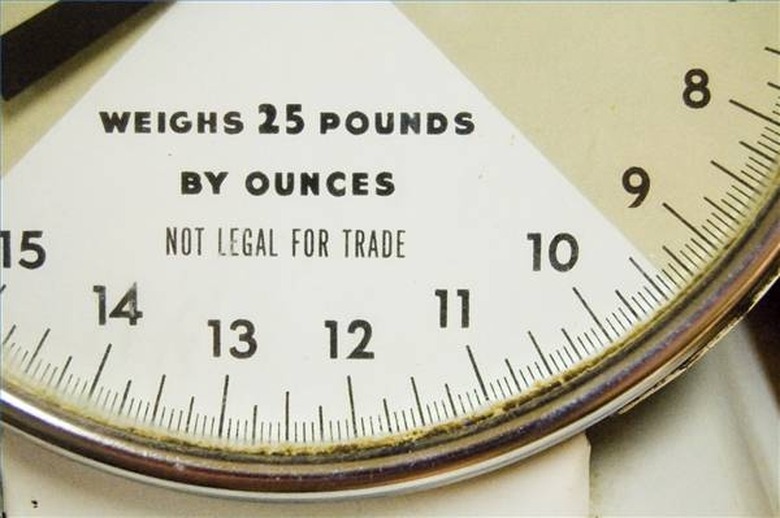How To Read A Weighing Scale
There are several different types of weighing scales, all used to weigh different things. The easiest kind to read is the digital scale, but an older scale can involve slides, rotating needles and multiple measurements that need to be added together. Learning to decipher all types of scale readings can help in classes, jobs and everyday measuring needs for cooking and weight management.
Step 1
Whatever scale you are using, make sure that you are weighing accurately by not placing additional weight on the scale accidentally. Place the item to be weighed entirely on the scale and remove your hand so that you aren't supporting some of the weight.
Step 2
Know that for a digital scale, a number will appear on the screen, and that is the weight of your item. If your scale measures pounds as well as ounces, it may show a reading like 12 lb. 3 oz. This indicates that your item has a weight of 12 pounds, 3 ounces.
Step 3
If you are using a scale that has a rotating needle, simply place the item on the scale and see where the needle lands. Most scales with rotating needles have numbers with 15 lines in between, because each pound has 16 oz. in it and the sixteenth line is where the next pound starts. If the needle lands on the fourth line past the number 3, this indicates that your item weighs 3 lbs., 4 oz. Occasionally, scales have only seven lines in between each pound, which means that each line counts for 2 oz. On a scale like this, you need to count which line it lands on and multiply that number by two. If the needle were to land on the fourth line past two, this would indicate that the item weighs 4 lbs., 4 oz.
Step 4
Know that the other main type of scale is called a balance beam scale. This is the kind with sliders, which is often found in doctors' offices. To operate it, place the item on the scale and move the top weight until the balance beam is almost level. You will find that the scale most likely won't be balanced completely at any of the numbers on this top weight. Leave the top weight at the lowest number notch where it is almost balanced. Move the bottom weight until the balance beam is completely balanced. Add the numbers on each slide together, and that is the total weight (in pounds) of your item.
